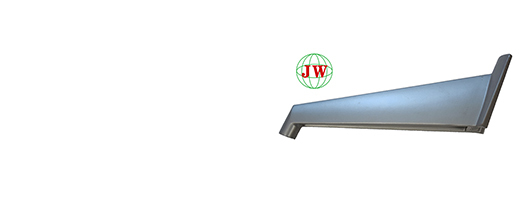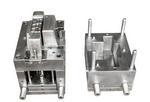
Do you understand the advanced Die Casting Mold design philosophy?
2024-10-12 15:38
In the field of manufacturing, Die Casting Mold plays a crucial role in determining the quality and efficiency of die casting production. The design of Die Casting Mold is a complex and technical process that requires a deep understanding of various factors. In this article, we will explore the advanced Die Casting Mold design philosophy and its importance in the die casting industry.
Die Casting Mold is a tool used to shape molten metal into specific forms. It consists of several components, including the cavity, core, ejection system, cooling system, and runner system. The design of Die Casting Mold must take into account many factors, such as the shape and size of the part to be produced, the properties of the metal being cast, the production volume, and the required surface finish.
The advanced Die Casting Mold design philosophy emphasizes the integration of functionality, reliability, and efficiency. This means that the mold must be designed to perform multiple functions simultaneously, while also ensuring high reliability and production efficiency. For example, the mold should be designed to cool the molten metal quickly and evenly to prevent defects such as porosity and shrinkage. At the same time, the ejection system should be designed to remove the part from the mold easily and without damage.
One of the key aspects of advanced Die Casting Mold design is the optimization of the cavity and core design. The cavity and core are the parts of the mold that directly shape the molten metal. Therefore, their design must be accurate and precise to ensure the dimensional accuracy and surface finish of the part. The cavity and core should also be designed to allow for easy removal of the part after casting, without causing damage to the mold or the part.
Another important aspect of advanced Die Casting Mold design is the selection of materials. The materials used for Die Casting Mold must be able to withstand the high temperatures and pressures of the die casting process, while also providing good wear resistance and corrosion resistance. Common materials used for Die Casting Mold include tool steels, hot work steels, and high-strength alloys.
The cooling system is also an essential part of advanced Die Casting Mold design. The cooling system is responsible for removing heat from the mold and the molten metal, which helps to prevent defects and improve production efficiency. The cooling system should be designed to provide even cooling throughout the mold, without causing thermal stress or distortion.
The runner system is another important component of Die Casting Mold. The runner system is responsible for delivering the molten metal to the cavity of the mold. The design of the runner system must ensure that the molten metal flows smoothly and evenly into the cavity, without causing turbulence or air entrapment.
In addition to these technical aspects, advanced Die Casting Mold design philosophy also emphasizes the importance of collaboration and innovation. Mold designers must work closely with product designers, process engineers, and production personnel to ensure that the mold meets the requirements of the product and the production process. At the same time, mold designers must be open to new ideas and technologies, and constantly seek ways to improve the design and performance of Die Casting Mold.
In conclusion, understanding the advanced Die Casting Mold design philosophy is essential for anyone involved in the die casting industry. Advanced Die Casting Mold design requires a deep understanding of the die casting process, materials science, and engineering principles. By following the advanced Die Casting Mold design philosophy, mold designers can create molds that are highly functional, reliable, and efficient, and help to improve the quality and productivity of die casting production.
Related News
More >-
![Die-Cast Lighting: Technological Innovation Illuminates the New Era of Green Lighting]()
Die-Cast Lighting: Technological Innovation Illuminates the New Era of Green Lighting
Die-cast lighting is reshaping the industry with technological advancements. Its precision die-casting enables seamless, complex designs, using aluminum, magnesium, and zinc alloys for durability and aesthetics. Intelligent manufacturing, via digital workshops and 3D simulation, boosts quality and efficiency. Green efforts include recycled materials and high recyclability. Market trends favor customization and functional integration like sensors. With 5G IoT and AI, it will advance intelligent, sustainable lighting.
-
![Die Casting Industry: Innovation Leads, Breakthrough Development]()
Die Casting Industry: Innovation Leads, Breakthrough Development
The die-casting industry is advancing driven by innovation. Advanced large-tonnage machines, like Dongfeng's 16,000-ton lines, simplify new energy vehicle production, cutting parts and time. Digital simulation optimizes processes, boosting quality. New materials, including high-performance alloys and biocompatible titanium-based ones, expand applications. Green practices prevail, with energy-saving equipment, waste treatment, and material recycling reducing environmental impact. Challenges like raw material cost fluctuations and rising quality demands exist, but opportunities lie in lightweight demand. Continued innovation will fuel its growth in global manufacturing.
-
![Do you want to know the cost-effectiveness of our medical machinery castings?]()
Do you want to know the cost-effectiveness of our medical machinery castings?
Our medical machinery castings balance quality and cost via advanced tech. High-pressure die-casting and automation cut assembly/labor costs, with automated lines boosting output. We use recycled biocompatible materials (stainless steel, titanium) sourced via partnerships for savings. Vertical integration and JIT inventory streamline supply chains, reducing outsourcing/overstock costs. Rigorous NDT and testing prevent recalls, ensuring long-term durability. Modular mold design enables affordable customization. This holistic approach delivers high-value castings meeting medical standards while optimizing cost-effectiveness.
-
![Powering Efficiency and Reliability: The Unmatched Advantages of Aluminum Alloy Die-Cast Motor End Caps]()
Powering Efficiency and Reliability: The Unmatched Advantages of Aluminum Alloy Die-Cast Motor End Caps
Engineered with precision die-casting molds, our aluminum alloy motor end caps redefine performance in electric machinery. Achieving ±0.02mm tolerance, these aluminum alloy die-cast components offer 30% better heat dissipation than traditional materials, thanks to optimized rib and fin designs. Our automated production lines churn out 1.2 million units annually with 99.8% pass rate, verified by AI-powered quality control. Trusted by 30+ global automotive, aerospace, and industrial brands, these end caps enhance motor efficiency by up to 15% and extend lifespan by 25%. Leveraging 3D-printed rapid prototyping and advanced alloy formulations, we provide customized solutions within 7 days, solidifying our position as the go-to partner for high-performance motor components.
-
![Die Casting: Reinventing Furniture Connectivity and Structural Integrity]()
Die Casting: Reinventing Furniture Connectivity and Structural Integrity
Die casting revolutionizes furniture by creating precision metal connectors (aluminum/zinc alloys) that ensure durable, stable joints. Lightweight yet strong, these components enable modular designs, easy assembly, and structural integrity for both residential/commercial use. Recyclable materials align with sustainability, while CAD/3D printing optimize production. Integrating smart tech, die casting drives flexible, long-lasting furniture solutions.
-
![The Vital Role of Die-Cast Furniture Connectors: Revolutionizing Assembly and Design]()
The Vital Role of Die-Cast Furniture Connectors: Revolutionizing Assembly and Design
In furniture manufacturing, die casting revolutionizes connectors (hinges, brackets) using aluminum, zinc, and magnesium alloys. It ensures precision, durability, and design flexibility, enabling quick assembly, load-bearing strength, and customizable aesthetics. Recyclable materials and Industry 4.0 tech enhance sustainability. Used in residential, commercial, and outdoor sectors, it addresses challenges via 3D mold design and smart manufacturing, shaping the future of modular and eco-friendly furniture
-
![Sourcing Excellence: The Flourishing Landscape of Die Casting Component Supply]()
Sourcing Excellence: The Flourishing Landscape of Die Casting Component Supply
The supply of die castings is crucial for various industries. Different metal alloys like aluminum, zinc, and magnesium are used, offering unique advantages. The supply chain involves die casting manufacturers, raw material suppliers, logistics, and quality assurance. Non-destructive testing and certifications ensure quality. Innovation, such as new die-casting techniques, and sustainability efforts, like recycling, are important. The growth of sectors like EVs drives demand, and die casting suppliers must adapt by investing in R&D to meet changing market needs
-
![Do you need any suggestions on the material selection of communication components?]()
Do you need any suggestions on the material selection of communication components?
Material selection for communication components is vital. Aluminum alloys are popular for their lightweight, corrosion - resistance, and thermal conductivity, suitable for various devices. Zinc alloys offer precision and cost - efficiency, ideal for small parts like connectors. Magnesium alloys are ultra - light and good for damping, used in aerospace. Copper alloys ensure excellent electrical and thermal performance for parts needing conductivity. Polymer composites serve specialized needs, providing insulation and cost - effective solutions for non - metallic components. Each material has unique advantages for different communication applications
Get the latest price? We'll respond as soon as possible(within 12 hours)












